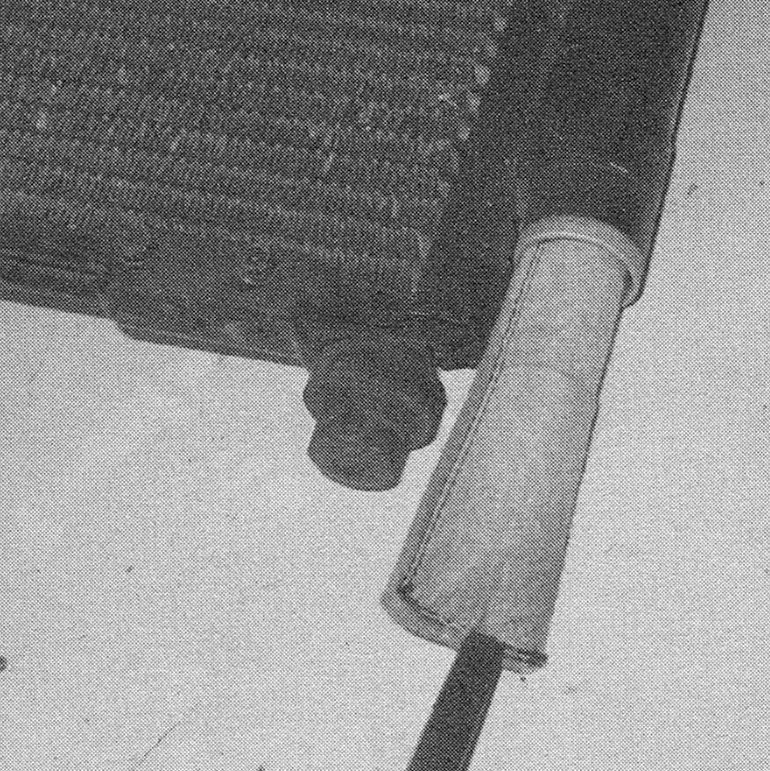Air conditioning receiver-drier — removal and installation
Warning: The air conditioning system is under high pressure. Do not loosen any hose fittings or remove any components until after the system has been discharged. Air conditioning refrigerant must be properly discharged into an EPA-approved recovery/recycling unit at a dealer service department or an automotive air conditioning repair facility. Always wear eye protection when disconnecting air conditioning system fittings.
Caution: When replacing entire components, additional refrigerant oil should be added equal to the amount that is removed with the component being replaced. Be sure to read the can before adding any oil to the system, to make sure it is compatible with the R-134a system.
1. Have the refrigerant discharged andrecovered by an air conditioning technician.
2. Disconnect the cable from the negative battery terminal (see Engine electrical systems).
3. Remove the front bumper cover (see Body).
4. Remove the condenser (see Air conditioning condenser- removal and installation).
5. On 2-door Civic and all CR-V models, remove the cap from the condenser (see illustration).
i.5 Remove the cap from the condenser

6. On 4-door Civic models, remove the twobolts (see illustration) and 0-rings, then separate the receiver drier from the condenser. The receiver-drier is replaced as a unit.
i.6 On 4-door Civic models, remove thetwo mounting bolts

7. On 2-door Civic and all CR-V models, remove the filter from the condenser and remove the receiver-drier desiccant (see illustrations).
i.7a Remove the filter fromthe condenser

i.7b Use pliers to remove the desiccantfrom the condenser

8. Installation is the reverse of removal. Besure to install new 0-rings onto the receiver-drier cap or mounting bolts. Apply a thin film of refrigerant oil to the desiccant before installing it. Also lubricate the 0-rings with refrigerant oil. If the receiver-drier was replaced, add 1/3-fluid ounces (10 mL) ofrefrigerant oil to the condenser (see Air conditioning condenser- removal and installation).
9. Reconnect the battery (see Engine electrical systems).
10. Have the system evacuated, charged and leak tested by an air conditioning technician.